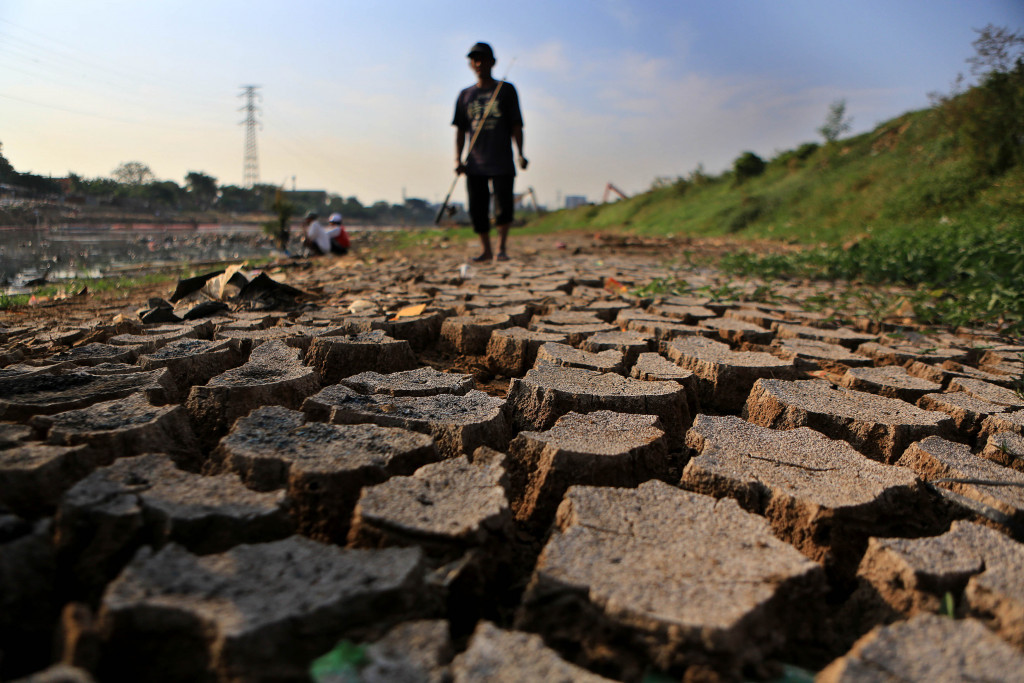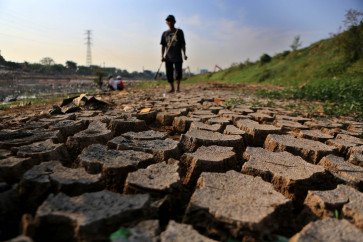Popular Reads
Top Results
Can't find what you're looking for?
View all search resultsPopular Reads
Top Results
Can't find what you're looking for?
View all search resultsClimate change brings worst drought to Indonesia since 2015
No rain in Buleleng, Sampang and East Sumba for more than 200 days
Change text size
Gift Premium Articles
to Anyone
R
egions in at least 11 southern Indonesian provinces, some of which have gone more than seven months without rain, are expected to see the prolonged dry spell continue until December, in another sign of changing weather patterns in the country.
Cities and regencies across Lampung, Banten, West and East Java, Yogyakarta, Bali, West and East Nusa Tenggara as well as South and Southeast Sulawesi have not seen rain for more than 61 days straight, according to Meteorology, Climatology and Geophysics Agency (BMKG) data as of Nov. 13.
The agency has raised the drought status for the said regions to the highest level of awas (warning), putting the chance of low-intensity rainfall in the areas in the following 20 days at 70 percent.
In the worst dry season the country has experienced since 2015, most affected regencies have experienced months without rain. Buleleng in Bali and Sampang in East Java have not seen rain for more than 216 days, while East Sumba in East Nusa Tenggara (NTT) has suffered the longest at 249 days.
The drought statuses of some regions in Bali, NTT, West Nusa Tenggara (NTB), Southeast Sulawesi and Maluku, meanwhile, have been put at waspada (advisory), meaning that the regions have not seen rain for more than 21 consecutive days with a slightly higher prospect of low-intensity rainfall.
BMKG’s climate variability analysis head Indra Gustari said an anomaly had been observed this year, marked by the lateness of the rainy season that would not come until late November or December in southern Indonesia, including Java, Bali and Nusa Tenggara.
This is in contrast to most of Sumatra and Kalimantan, which are expected to see their rainfall peak over the same period. “There are two factors: First is the weak El Niño phenomenon that we observed from the middle of last year until July this year. However, a more dominant factor is the relatively low sea surface temperature, a global phenomenon known as the positive Indian Ocean Dipole,” Indra told The Jakarta Post on Friday.


















